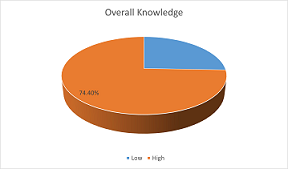Utilization and Effectiveness of Herbal Medicine in Treatment of Malaria in Osun State

Abstract:
Concern among health professionals has been raised by the ongoing rise in the prevalence of malaria in recent years. Herbal treatments have been deemed the most popular form of traditional medicine in Africa and a high percentage used it for malaria treatment. Poor health care services with unaffordable malaria have been a major barrier to malaria control. This study investigated the use and effectiveness of traditional medicine in treatment of malaria in Osun State, Nigeria. 15 people with malaria across the three senatorial districts of Osun State were selected, using snow balling sampling techniques. Experimental design was utilised to assess the level of knowledge on malaria. Descriptive survey was used to assess the use of traditional medicine, and true experiments to test efficacy of herbal medicine. This study found that respondents have inadequate knowledge of traditional medicine for treatment of malaria and lack adequate knowledge that anopheles mosquito cause malaria. However, use of traditional medicine is high among respondents, with most of the listed herbs achieving a significant point for mean (2.5). Majority of respondents either have malaria parasites hibernated and experience malaria relapse later or the herbal medicine used were ineffective in the first place. The effectiveness of these combined herbs is also dependent on the intensity of the malaria infection. The study concluded that traditional medicine is effective among just in a few of the respondents, who combined, prepared herbs appropriately and took it as prescribed by experienced herbs experts.
Keywords; Malaria, Treatment of malaria, Herbal medicine.
References:
[1]
Uzochukwu B S, Onwujekwe E O, Onoka C A and Ughasoro
M D. (2008). Rural- urban differences in maternal responses to fever in Southeast
Nigeria. 2008 [Online]. Available at http://www.pubmedcentral.nih.gov.
[2] Ashley EA, Dhorda M, Fairhurst RM, Amaratunga C, Lim P, Suon S, Sopha C (2014)
Spread of artemisinin resistance in Plasmodium falciparum malaria. N Engl J Med
371(5):411–423. https://doi.org/10.1056/NEJMoa1314981.
[3]
World Health Organization
(2020) World Malaria Report 2020. World Health Organization, Geneva. https://doi.org/10.30875/60123dd4-en.
[4]
WHO (2013). WHO Traditional Medicine Strategy
2014–2023. Zlatković, B.K., Bogosavljević, S.S., Radivojević, A.R. and Pavlović,
M.A. (2014). Traditional use of the native medicinal plant resource of Mt. Rtanj
(Eastern Serbia): Ethnobotanical evaluation and comparison. Journal of Ethnopharmacology,
151: 704-713.
[5]
Ashley EA, Dhorda M, Fairhurst RM, Amaratunga C,
Lim P, Suon S, Sopha C (2014) Spread of artemisinin resistance in Plasmodium falciparum
malaria. N Engl J Med 371(5):411–423. https://doi.org/10.1056/NEJMoa1314981.
[6]
Maximus, M. T., Bambang, P. E.W. & Mangestuti,
A., (2018). Plants used in traditional medicine for treatment of malaria by Tetun
ethnic people in West Timor Indonesia. Asian Pacific Journal of Tropical Medicine.
Vol. 11(11): pp.630-637 https://doi.org10.4103/1995-7645.246339.
[7]
Alebie, G., Urga, B. & Worku, A., (2017). Systematic
review on traditional medicinal plants used for the treatment of malaria in Ethiopia:
trends and perspectives. Malaria Journal, vol 16:307 https://doi.org/10.1186/s12936-017-1953-2.
[8]
Beavogui AH, Delamou
A, Camara BS, Camara D, Kourouma K, Camara R, Djimde A (2020) Prevalence of malaria
and factors associated with infection
in children aged 6 months to 9 years in Guinea: results from a national cross-sectional
study. Parasite Epidemiol Control 11: e00162. https://doi.org/1 0.1016/j.parepi.2020.e00162.
[9]
Eze, B, Chuka-Okosa, C & Uche, J. (2013). Traditional
eye medicine use by newly presenting ophthalmic patients to a teaching hospital
in south-eastern Nigeria: Socio-demographic and clinical correlates. Biomedical
Centre Complementary and Alternative Medicine.
[10]
Abdullahi, A., and Van Zyl-Schalekamp, C. Seneka,
A. (2013). Perceived Threat of Malaria and the Use of Insecticide Treated Bed Nets
in Nigeria. African Sociological Review 17(1)1-8.
[11]
Ntim-Amponsah, C, Amoaku, W & Ofosu-Amaah,
S. (2015). Alternate Eye Care Services in a Ghanaian District Medical Journal
39(1):19–23.
[12]
Nwosu, S & Obidiozor, J. (2014). Incidence
and risk factors for traditional eye medicine use among patients at a tertiary hospital
in Nigeria. Nigerian Journal of Clinical Practice 14: 405 – 107.
[13]
Maximus, M. T., Bambang, P. E.W. & Mangestuti,
A., (2018). Plants used in traditional medicine for treatment of malaria by Tetun
ethnic people in West Timor Indonesia. Asian Pacific Journal of Tropical Medicine.
Vol. 11(11): pp.630-637 https://doi.org10.4103/1995-7645.246339.
[14]
Mbah, G.O., and Ekweanya, N.M. (2019). Analysis
of Utilization of Traditional Medicine for the Treatment of Malaria among Rural
Farmers in Abia State, Nigeria. International Journal of Environment, Agriculture
and Biotechnology (IJEAB) Vol-4, Issue- 2.
[15]
Adebayo JO, Krettli AU (2010) Potential antimalarials
from Nigerian plants: a review. J Ethnopharmacol 133(2):289–302. https://doi.org/10.1016/j.jep.
[16]
Karunamoorthi, K.,
Jegajeevanram, K., Vijayalakshmi, J. & Mengistie, E. (2012). Traditional Medicinal
Plants: A Source of Phytotherapeutic Modality in Resource-Constrained Health Care
Settings. Journal of Evidence-Based Complementary & Alternative Medicine
18(1) 67-74 SAGE. https://doi/10.1177/2156587212460241.
[17]
WHO, (2000a). Traditional and Modern Medicine:
Harmonising the two Approaches. Western Pacific Region. Geneva: World Health Organisation.
[18] Joseph,
A., Nestor, G., Mark, A., and Vincent, B. O., (2017). Malaria in Pregnancy: A Demographic
and Clinical Surveillance at Mother and Child Hospital Ondo, Southwestern, Nigeria.
Journal of Prevention & Infection Control. 2017, 3:1.
[19]
Singh, S. & Singh, R. (2014). Herbal Medicinal
Treatment of Malaria in Aliero Local Government Area, Kebbi, Nigeria. Journal of
Medicinal Plants Studies. Volume: 2, Issue: 2. Pp.117-126 ISSN:
2320-3862 Online Available at www.plantsjournal.com.
[20]
Malaria-carrying mosquitoes bite night and day.
(2022). Nature, 605(7911), 592–592. https://doi.org/10.1038/d41586-022-01356-0.

